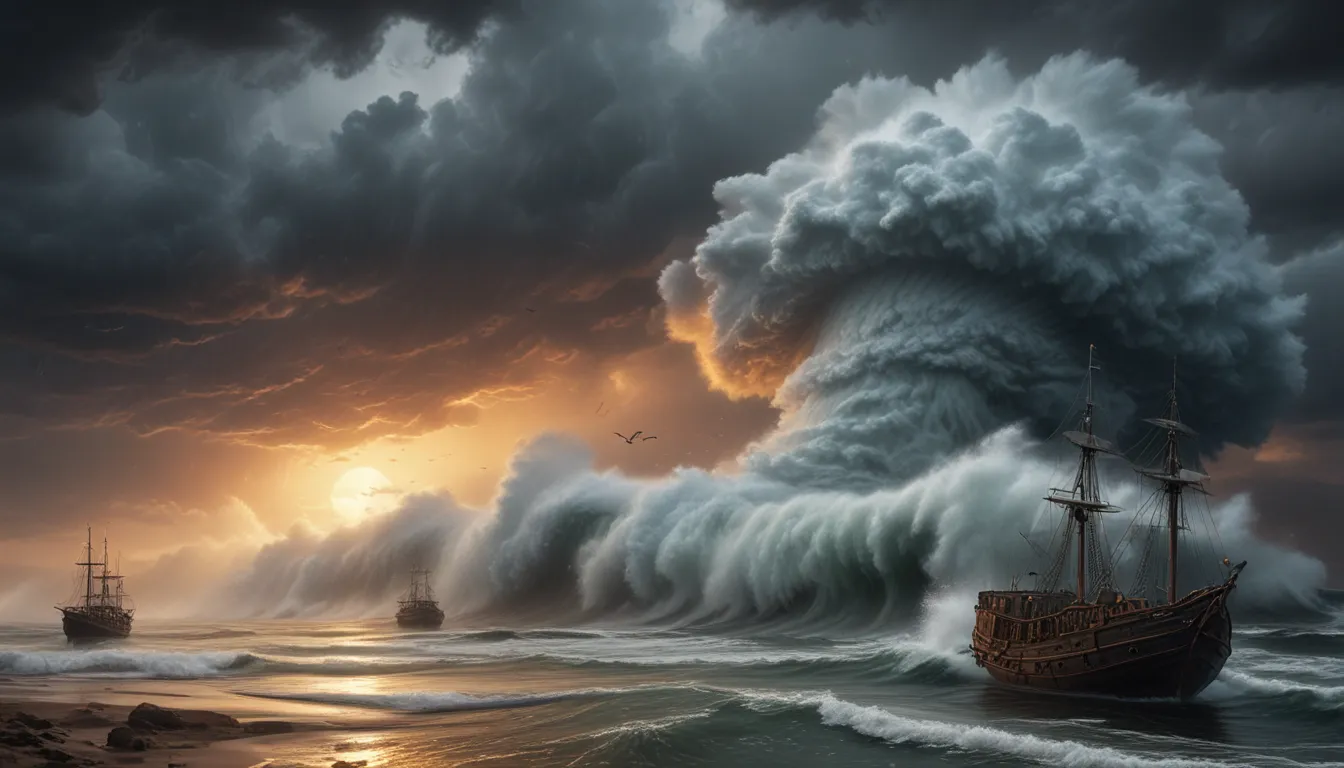A Note About Images: The images used in our articles are for illustration purposes only and may not exactly match the content. They are meant to engage readers, but the text should be relied upon for accurate information.
Cyclones, also known as hurricanes or typhoons, are awe-inspiring weather phenomena that have captured the attention of people worldwide. These intense storms, characterized by swirling winds and towering cloud formations, can unleash tremendous energy upon the earth’s surface. From the formation of cyclones to their classification systems and the potential damage they can cause, there is much to learn and appreciate about these natural occurrences.
Understanding Cyclones: From Formation to Classification
Cyclones Form Over Warm Ocean Waters
Cyclones thrive in regions with warm surface temperatures of at least 26.5 degrees Celsius (80 degrees Fahrenheit). As warm air rises from the ocean’s surface, it creates a low-pressure area that serves as the starting point for cyclone development.
Astonishing Wind Speeds
One of the most striking features of cyclones is their powerful winds, which can reach speeds exceeding 250 kilometers per hour (155 miles per hour). These intense winds spiral inward towards the eye of the storm, creating a destructive force.
The Calm Eye of the Storm
Contrary to the fierce winds surrounding it, the eye of a cyclone is a tranquil and clear area at its center. This calm zone provides a temporary respite from the storm as the winds subside and the skies clear.
Vast Diameter
Cyclones can span hundreds of kilometers in diameter, engulfing entire regions and leaving a trail of destruction in their wake.
The Saffir-Simpson Scale
The Saffir-Simpson Scale is used to assess cyclones’ intensity by categorizing them into five levels based on their wind speeds, storm surge potential, and potential for property damage. This scale aids meteorologists and emergency officials in evaluating the severity of an approaching cyclone.
Fueling Strength with Warm Ocean Currents
Warm ocean currents, especially those found in tropical regions, play a significant role in enhancing cyclone strength. The interaction between warm water and the storm’s structure creates a feedback loop that intensifies cyclones, making them even more hazardous.
The Menacing Eyewall
The eyewall of a cyclone, the area surrounding the eye, is the most intense and destructive part of the storm. It harbors the strongest winds and experiences the heaviest rainfall, contributing significantly to the storm’s impact.
Impact of Cyclones: Storm Surges and Tornadoes
The Peril of Storm Surges
One of the most dangerous aspects of a cyclone is the storm surge it generates. The combination of low atmospheric pressure and powerful winds propels vast amounts of water towards the coast, leading to flooding and widespread devastation in coastal areas.
Tornadoes Within Cyclones
Within the spiral bands of a cyclone, smaller tornadoes can form, adding another layer of danger and chaos to the storm. These tornadoes can cause localized destruction, compounding the cyclone’s impact.
Global Diversity: Names and Climate Change
Regional Names for Cyclones
Cyclones are known by different names depending on their location. In the Atlantic and Northeast Pacific, they are called hurricanes, while in the Northwest Pacific, they are referred to as typhoons. In the Indian Ocean and South Pacific, they are known as cyclones.
Climate Change Implications
Scientific research suggests that climate change may influence cyclones, potentially increasing their frequency and intensity in certain regions. Warming ocean waters and alterations in atmospheric conditions could lead to more potent and devastating cyclones in the future.
Embracing the Power of Cyclones: Conclusion
In conclusion, cyclones are powerful and captivating natural phenomena that demand our respect and understanding. By delving into the fascinating facts about cyclones, we can better prepare for and mitigate the impact of these formidable weather events. From their unique formation process to the distinct categories that define their intensity, cyclones continue to intrigue scientists and weather enthusiasts worldwide.
Studying cyclones provides valuable insights into our planet’s climate and enhances our capabilities in forecasting and warning systems. It is essential to stay informed and heed the advice of meteorological experts during cyclone events to safeguard our communities and resources. While cyclones showcase nature’s awe-inspiring power and unpredictability, our vigilance and preparedness can help minimize their impact on vulnerable populations.
Frequently Asked Questions (FAQs)
Q: What is a cyclone?
A: A cyclone is a large-scale weather system with a low-pressure center and strong rotating winds. Cyclones occur in various parts of the world and are known by different names like hurricanes, typhoons, or tropical cyclones.
Q: How are cyclones formed?
A: Cyclones typically form over warm ocean waters when specific atmospheric conditions, such as moisture, instability, and wind shear, are present. The rising warm air and sinking cool air create a rotating system that gains strength through the release of latent heat from condensing water vapor.
Q: How can we prepare for a cyclone?
A: To prepare for a cyclone, it is crucial to stay informed through trustworthy weather sources and follow the guidance of meteorological agencies. Preparations may involve securing loose items, stocking up on essential supplies, and identifying evacuation routes and shelters.
Join Us in the Exploration of Nature’s Wonders
Cyclones serve as powerful reminders of the earth’s dynamic and ever-changing nature. By expanding our knowledge of these remarkable phenomena, we can enhance our resilience and readiness in the face of natural disasters. Let us continue to appreciate the majesty of cyclones while working together to protect our communities and environment from their impact. Stay informed, stay safe, and embrace the wonders of the natural world.






